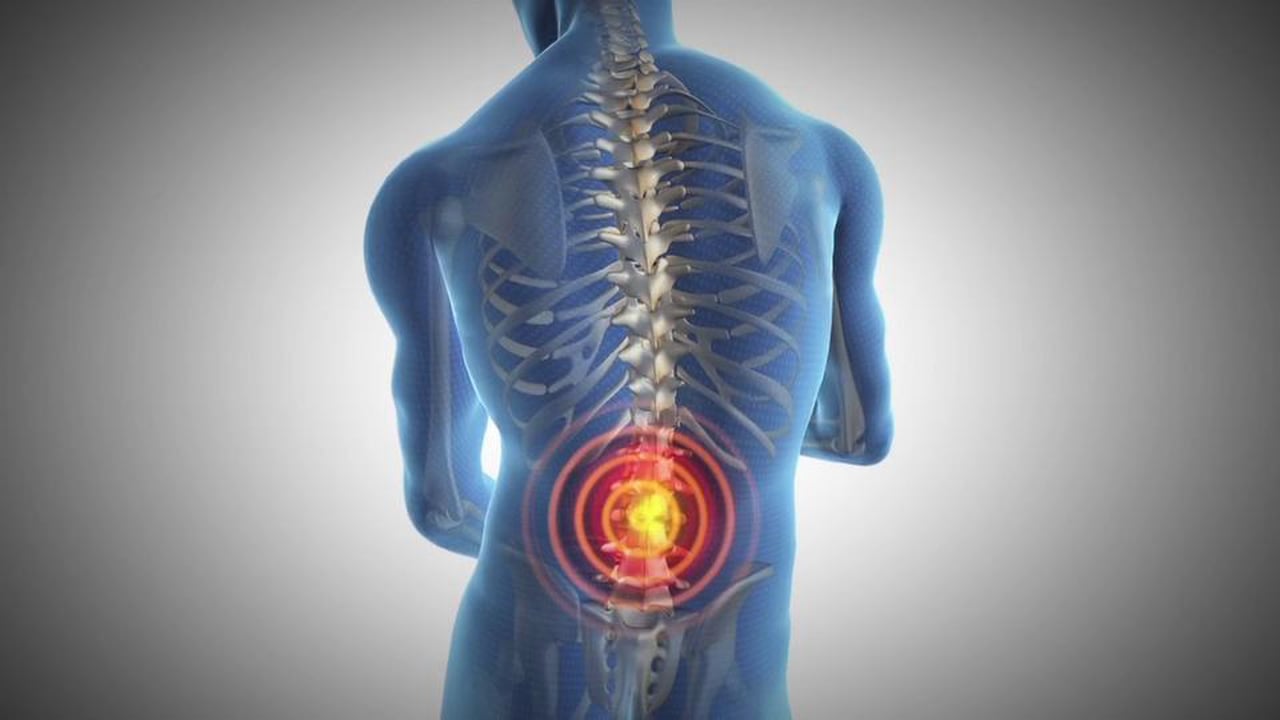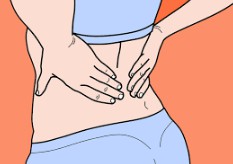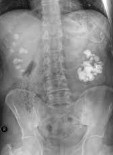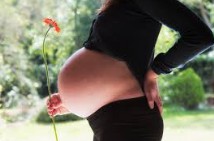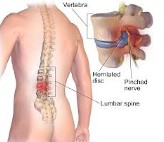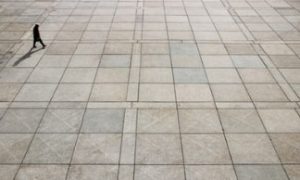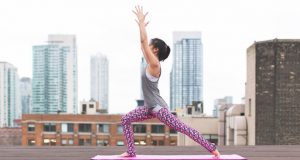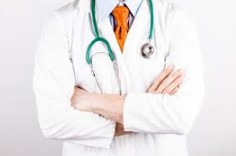Lower back pain, also known as lumbago, is one of the most common causes for visits to the hospital emergency room. In fact, statistics indicate that approximately 80% of all American citizens will experience back pain at some period in their lives. Lower back pain is typically felt on one side of the body exclusively as either a constant pain or as an ache that will flare up for a period and then subside. It has been noted that lower back pain located on the left side of the body is more common that lower back pain located on the right side of the body.
While lower back pain or lumbago most commonly begins under the ribcage, it is not atypical for people to experience this difficulty above the leg or hip. The symptoms of lumbago can alter dependent on the individual and it may be a sharp, severe, and stabbing sensation, or a constant and dull ache. The pain can be intensely hot or intensely cold and may travel from the back through the leg and to the foot.
What are the Different Causes of Lower Left Back Pain?
It is possible for pain in the lower left side of the back to be caused by problems with one or more internal organs, such as issues with the colon or kidneys. It is also possible for lumbago to be a result of damage or injury to the internal structures around and in the spinal column, such as the vertebrae, the spinal joints, and the connective tissues. Below are some of the most common causes of lower left back pain:
1. Lower Back Muscle Strain
Muscle strain is typical cause for lower left back pain and this involves the continuous pulling on a particular muscle or related tendons in the lower left back region. There are different reasons why an individual may experience muscle strain and these can include being overweight, having weak abdominal muscles, having a weak back, and lifting heavy objects.
2. Incorrect Or Poor Posture
In today’s society many people suffer from poor posture and this complication can be a long-term problem. The causes of poor posture are numerous, but the one common factor that all people with poor posture have to deal with is lower left back pain. Lumbago is an issue for these individuals because the incorrect posture or slouching places excessive and undue stress on the muscles in the lumbar region and the hip flexor muscles.
3. Kidney Stones And Urinary Issues
Severe lower left back pain can be an indicator of a problem with the kidneys, such as kidney stones, a kidney infection, or a urinary tract infection. If there are kidney stones, the pain will transfer to the lower abdomen and along the groin. However, when a kidney infection is experienced, the pain will begin in the bladder and travel to the kidneys where inflammation will occur.
4. Reproductive System Problems
Lower left back pain evident in females may be indicative of a physical problem within the reproductive system, specifically in the left side fallopian tube or ovary. The pain will intensify if there is a cyst, an infection, or a twisting of the ovary. It is also possible that the back pain can be caused by a pregnancy developing at the fallopian tube or left ovary instead of in the uterus. For males, lower left back pain can also be indicative of problems in the reproductive system. The issues in males can include a twisted testicle, a testicular infection, or potentially a tumor in the testicle region.
5. Pregnancy
Lower back pain in either the right or left side can occur, and often does occur, during pregnancy. This is due to the baby developing and the mother’s body accommodating the fetus. As with all types of back pain, the severity of the pain can range from a sharp, stabbing sensation to a constant ache. It is possible to ease the pain through exercise, appropriate stretching, and resting.
6. Ulcerative Colitis
Ulcerative colitis – an inflammatory bowel disease – is marked by constant inflammation within the large intestine, also known as the colon. The inflammation or swelling will typically contribute to chronic digestive problems including diarrhea, rectal pains, and weight loss. Abdominal cramping is another sign of ulcerative colitis and this can lead to stabbing back pains on one or both sides of the lower back.
7. Pancreatitis
Pancreatitis is a medical condition involving the inflammation of the pancreas. This condition can result in upper abdominal pain which can spread to the lower left region of the back. The majority of individuals will describe the pain experienced as a dull aching sensation and this can be intensified by eating particular foods, such as foods that have high fat content.
8. Herniated Lumbar Disc
It is possible for an inter-vertebral disc to herniate on the left side of a vertebral segment; thereby, causing dull pains in the lower back and stabbing pains through the left hip and the left leg. The majority of patients have noted that the pain in the leg may not be as constant as the lower back pain, but it is more difficult to manage. It has been seen that both the lower back pain and leg pain can increase after prolonged sitting. Furthermore, the pain can occur on both sides if left untreated.
9. Osteoarthritis Or Facet Joint Pain
Facet joint pain, also known as osteoarthritis, is an age-related condition that will affect either one or both of the facet joints in the back of the vertebra. This is a “wear and tear” disorder and symptoms include stiffness in the bones, discomfort, and dull pain. Bone spurs on the lower left side of the spine can agitate nerve roots, which will contribute to shooting pains along the left hip and down the left leg.
10. Sacroiliac Joint Dysfunction
The sacroiliac joint can be problematic if its normal range of movement is disrupted. If this range is disrupted, the patient will experience lower back and pelvic pain on one or both sides of their body. Too little movement of the joint can result in the lower left back pain travelling down the buttocks and along the leg; however, too much movement can result in the lower back pain or hip pain travelling into the groin region. The condition ankylosing spondylitis often begins with pain in the sacroiliac joint.
What Should I Do if My Back Begins to Hurt?
Many people suffer from sudden, stabbing pains on the lower left side of their back, and while this is a common problem people who experience it may think it to be one of the more painful conditions at the moment. Dealing with the pain immediately is in the forefront of any person suffering with back pain’s mind, and while refraining from physical activity can be useful when recovering from back pain it is not the best long-term treatment option. This is due to the fact that refraining from physical activity can lead to loss of endurance, loss of flexibility, and loss of strength.
To avoid these detrimental side effects, it is recommended that you maintain physical activity instead of refraining from it. It is recommended that you try and perform low-impact exercises, such as walking or water aerobics – it is important that the activity does not involve any sudden actions that could potentially aggravate the pain. Application of an ice pack on the affected area for approximately 15-20 minutes five times per day can reduce the inflammation, swelling and soreness. It is also advised that one sleep with a pillow between the knees and on the left side of the back to help relieve pain.
If an individual suffers from lower back pain on the left side for more than 24 hours, it may be beneficial to contact a primary care physician. This is recommended because the cause of back pain needs to be identified before any treatment can be applied. The medical professional may use MRIs, x-rays, CT scans, bone scans or mylelograms to diagnose the lower left side back pain.
Treatment of lower left side back pain can vary from patient to patient, but it commonly involves taking pain relievers, attending physical therapy, and beginning exercise programs focusing on the lower back. If visiting a doctor is not the best option available, the resources below can be used as home treatment options to identify lower back pain causes.
What are the Lower Left Side Back Pain Natural Treatments?
There are several natural remedies that can be utilized to increase the speed of the recovery process, some are discussed below.
1. Yoga
Numerous research studies have found that yoga can be highly beneficial when dealing with lower back pain on the left side. This practice focuses on stretching, flexibility, and strength building to relieve pain in the back. The studies also indicate that yoga can be used for lower back pain and improvement in lower back functioning.
2. Acupuncture
Several studies have found that acupuncture can be an effective type of natural treatment for chronic lower back pain on both the left and right side.
3. Aromatherapy
Various essential oils present with stress-relieving and relaxation properties, such as lavender, geranium, and jasmine. Additional essential oils that can be used to treat back pain include Idaho balsam, frankincense, and peppermint.
4. Massage Therapy
Massage therapy is a natural treatment providing significant healing and pain relief to individuals experiencing lower back pain as a result of muscle strain and tension. This type of treatment is beneficial when the correct muscles are targeted and massaged to remove all tension from the area.
5. Exercise
It is recommended that one engage in regular exercise to strengthen abdominal and core muscles, which can contribute to a reduced risk of lower back pain. It is essential that a person remain in shape by engaging in at least thirty minutes of exercise at least five times per week. Low-impact exercises, such as walking or swimming, can be as effective as high-impact activities. It may be useful to work with a personal trainer in order to avoid any further lumbago.
How Can Left Side Back Pain Be Prevented?
Prevention is, arguably, the most beneficial approach to dealing with back pain. There are numerous methods to prevent back pain and strengthen the back muscles, and several courses of action can be taken to prevent lower back pain on the left side.
Firstly, avoid standing for long periods of time. This can be stressful to the back muscles and unless one needs to stand for work it is recommended that one alternate resting with a foot on a stool.
Lifting objects should not be completed by using the arms, but always by lifting with the legs. This is irrespective of the weight or size of the object.
When walking and sitting, it is recommended that one maintain a relatively upright position for good posture.
When sitting in a chair at work, it is advised that the chair has a straight back with a swivel seat and adjustable back. It may also be beneficial to place a small pillow behind the lower back when sitting for long periods of time.
When to See Your Doctor About Lower Left Back Pain
Pain in the lower back can cause you to become very concerned. In some cases, lower back pain may be occurring because of a more serious medical condition that is present. With that said, you’re probably wondering when you should see a doctor.
You should see a doctor right away if you have a history of cancer or if you fell and that’s why your back is in pain. You should also see a doctor if you have problems going to the bathroom, burning sensation from urination or if there is blood present in your urine. Back pain that spreads to your legs, worsens when lying down or if you’ve lost a lot of weight unintentionally, then go and see a doctor right away.
Make sure to see a doctor if your back pain has been caused by steroids or intravenous drugs. If you have a history of back pain but the pain is worse now, or if you have weak or numbed legs, then see a doctor. Also, see a doctor if you have developed new bowel or bladder problems or if you’re experiencing abdominal pain.
Conclusion
A health professional should be able to check for the above symptoms and to see if there are other reasons why your lower back is in pain. A health professional may perform other tests, such as CT scans, x-rays or blood tests. If you experience any of the above symptoms or conditions, then it’s important to seek out medical attention right away.
Medical attention may not be required if you are able to manage your lower back pain using over-the-counter medicine, hot or cold packs or by modifying your activities. Generally speaking, you should see a doctor if you experience pain as a result of an injury or an accident, or if the pain does not get better or if it worsens. If pain interferes with your daily life and you cannot do things such as sleep, stand or walk, then it’s time to see a medical professional.
